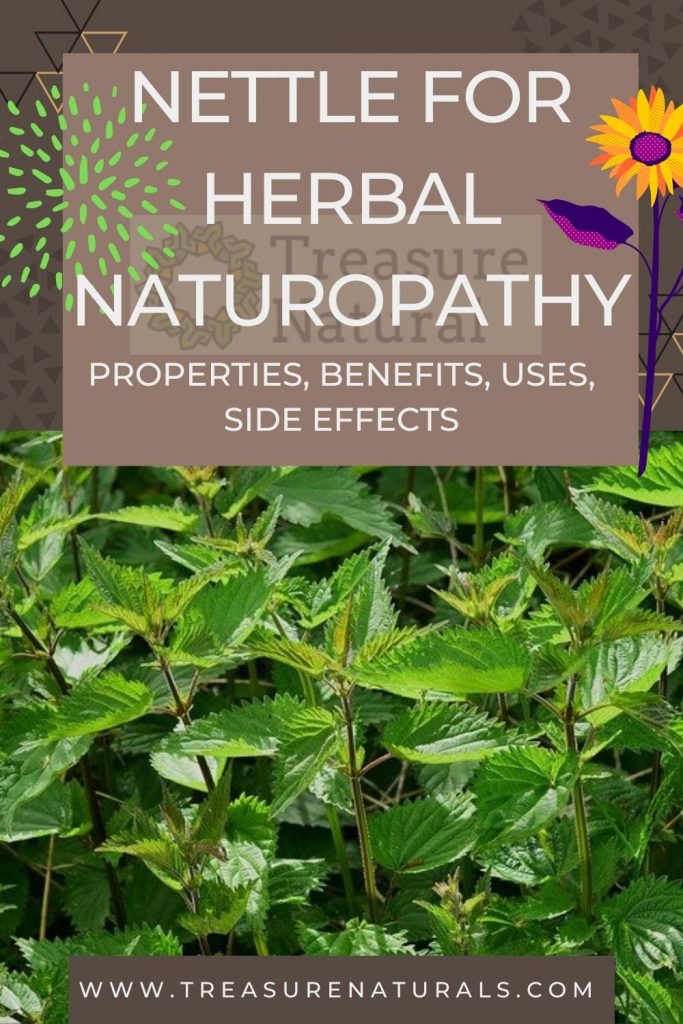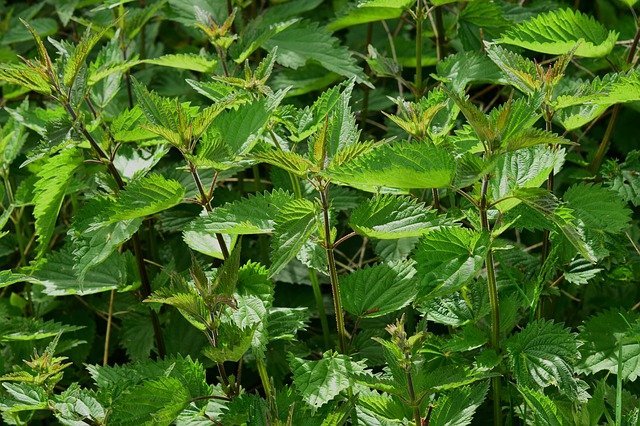
Nettle is a plant with diuretic, purifying and ronic action. Here are all the benefits and contraindications.
Nettle (Urtica dioica) is a plant of the Urticaceae family. Rich in vitamins and minerals, it is used for the well-being of the urinary tract and kidneys, but also for the beauty of the skin. Let’s find out more.
Properties and benefits of nettle
Nettle is a very common spontaneous plant, to which numerous properties are attributed. In particular, among the properties of nettle stand out that:
- Tonic;
- anti-inflammatory;
- diuretic.
Traditionally, nettle leaves have always been used to improve digestion, as a tonic, to purify the body, to promote lactation, to calm diarrhea and against anemia.
In addition, being a diuretic herb, nettle is also used to reduce water retention and blood pressure and to eliminate uric acids.
The anti-inflammatory activity of nettle is instead exploited to treat rheumatic diseases, low back pain, sciatica, tendinitis, but also inflammation and infections of the urinary tract and for the prevention and treatment of renella. Nettle is also able to improve the symptoms of benign prostatic hyperplasia.
The external use of nettle-based preparations are finally useful in case of:
- Seborrheic dermatitis;
- seborrhea;
- hair loss;
- oily hair.
Uses of nettle
Nettle is used leaves and roots. Nettle leaves contain mineral compounds and vitamins, as well as chlorophyll. The minerals present in nettle are mainly calcium and potassium, while among the nettle vitamins we find vitamin A, B2, C and folic acid.
Nettle leaves are used for remineralizing, restorative, antianemic, diuretic, anti-inflammatory action and to rebalance the intestinal bacterial flora. Externally,they are used to reduce excess sebum and to treat seborrheic dermatitis of the skin and scalp.
With the leaves you can prepare infusions and fresh juices, but they are also normally consumed as food. The common nettle is in fact consumed – after boiling – sautéed in a pan as a vegetable or used to prepare soups, omelettes and fillings.
The nettle root has polysaccharides, lectin, phenolic compounds, sterols and tannin. It is mainly used in the treatment of benign prostatic hyperplasia in the form of a decoction and dry or fluid extract.
How to use
Infusion
The nettle infusion is prepared with a tablespoon of dried nettle leaves for each cup of water. You can consume up to three cups a day.
Nettle juice
It is obtained from fresh leaves and a tablespoon of them is consumed twice a day for about a month.
Decoction
The decoction is obtained with about 4 grams of root dried in water, to be boiled for ten minutes.
Mother tincture
It is taken one to three times a day by diluting 40 drops in a glass of water. For external use, it is used diluted in 10% water.
Other remedies with nettle include fluid and dry extracts and powder, to be taken according to the manufacturer’s indications.
Side effects of nettle
Nettle is a safe remedy that does not cause significant side effects at therapeutic doses. In case of prolonged use, at high dosages or in sensitive people, it can instead cause minor gastrointestinal disorders.
Contact with fresh nettle leaves instead causes a skin reaction due to the presence of histamine and formic acid, which leads to the formation of small apples that cause itching, redness and burning.
Contraindications of nettle
Taking nettle is not recommended during pregnancy, if taking diuretic drugs and in case of edema provoked by heart or kidney failure.
The whole plant is covered with a stinging down that can cause allergy and irritation.
Description of the plant
The nettle plant is a perennial herbaceous, with an erect stem (1.5 m) with a quadrangular section.
It has oval-hearted leaves, opposite, provided with petiole, with toothed margins and covered by numerous stinging hairs.
Nettle flowers are small and inconspicuous, greenish in color, gathered in long spikelets that appear from June to October.
It is a dioecious plant: that is to say that there are individuals who carry only female flowers and others who carry only male flowers. At first glance they are easily recognized, as in the “female plants” the flowers are gathered in pendulous spikes while in the “male plants” the flowers are gathered in erect ears.
The fruit is an achene that contains only one seed. The whole plant is covered with a thick stinging down.
Nettle habitat
The genus “nettle” belongs to the Urticaceae family and groups annual or perennial herbaceous plants, which are born spontaneously everywhere (it is a practically cosmopolitan plant) up to about 2500 m of altitude, especially near the houses where there are debris of organic substances, that is to say very nitrogenous soils.
Very frequent also in large groups along the roadsides, among the rubble, but also in the wooded glades.
How to recognize a nettle plant
The wild nettle is widespread in our country and it is not at all difficult to recognize it. Looking at the nettle images you can easily identify nettle plants in nature by the shape of the leaves or thanks to the presence of flowers.
In case of doubt, touching the leaves is impossible to be wrong since the plant is immediately recognized by the stinging effect (which can be alleviated thanks to a few drops of lavender essential oil, to be applied immediately). Precisely because of the stinging action, once identified it is good to wear gloves to collect nettle.
Background

The name nettle comes from the Latin urere which means “to burn” in reference to its stinging hairs. Its properties were already known in antiquity. Castor Durante, for example, in his “Herbario Nuovo” (1585), after saying: “It is so well known plant the nettle, that it is known from each one until the dark night”, listed a vast amount of “virtues of inside” and “virtues of outside”.
Textile fibres were also obtained from the plant in Germany, used in Europe during the First World War. Today they are anchors used by primitive populations of northern Asia, which derive a rough fabric, practically indestructible. In many folk traditions belonging to all of Central Europe,it is believed that a nettle plant drives away lightning if thrown into the hearth.
Even in the past it was used to flagellate with nettle the painful parts of the body affected by rheumatic pains, because it stimulated beneficial reactions. This is not surprising if you think that rheumatism is also treated with bee sting. Other popular beliefs claim that carrying a nettle plant with you has negative influences.






